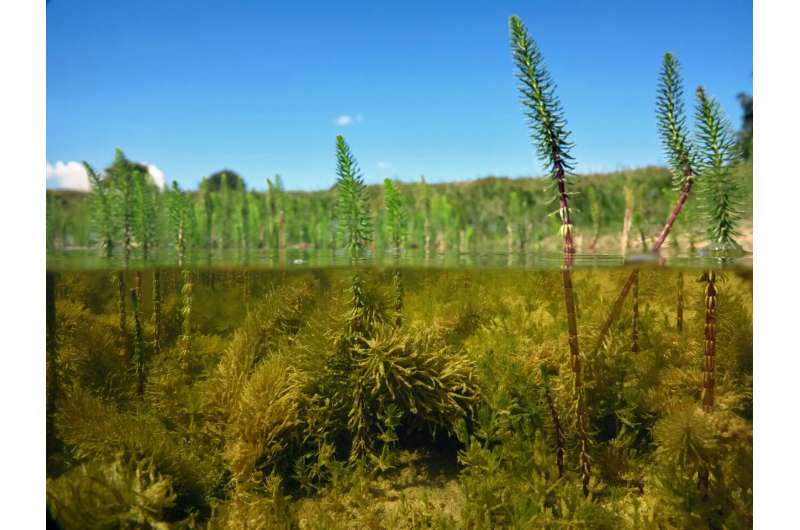Credit: Bryce Benda (Leiden University)
Environmental scientists of Leiden University have found that the so-called leaf economics spectrum for plants can not only be applied to terrestrial ecosystems, such as forests and grasslands, but also to wetlands. Furthermore, they showed that wetland plants generally have a fast-return strategy, meaning they have higher metabolic rates and a faster return on investment of nutrient and leaf materials, but shorter leaf lifespan. The findings, published in Nature Communications, help explain the high productivity of plants in wetland ecosystems.
A spectrum for plant leaves
Leaf economics traits are a group of traits that are indicative of the plant's strategy of dealing with its habitat nutrient supply. These leaf traits include leaf nutrient content, photosynthetic rate, dark respiration rate, and leaf lifespan.
Earlier studies have found that leaf economics traits are mathematically related to each other, and can be projected to a unified so-called leaf economics spectrum depending on their habitat conditions. For example, plants from nutrient-rich habitats usually have higher leaf nutrient content, faster photosynthetic and dark respiration rate, but shorter leaf lifespan. This pattern can be explained by the fact that nutrient-rich habitats allow the plant to have a high metabolic rate and return the cost of leaf construction in a short period of time. These plants, therefore, occupy the fast-return end of the spectrum. On the other hand, plants from poor nutrient habitats show an opposite trend with lower leaf nutrient content, slower photosynthesis, and longer leaf lifespan. That is why they occupy the slow-return end of the spectrum.
The wetland plant Hippuris vulgaris. Credit: Ole Pedersen
Fast-return strategy
The leaf economics spectrum can be applied to varied non-wetland terrestrial ecosystems globally, such as forests and grasslands. First author of the study Yingji Pan says, "However, people know little about whether and how the leaf economics spectrum also exists within wetland plants on a global scale. Based on our newly compiled global wetland plant trait database, we revealed that the leaf economics spectrum also holds in wetlands."
The study expands the leaf economics spectrum theory to wetland ecology, showing how it deviates from ecosystems on land as wetland plants were shown to generally have a fast-return strategy. Pan: "Given that the analysis was based on a global database, this seems a generic feature of wetlands. This provides a traits-based explanation for observations that wetlands have high herbivory rates and generally high productivity, both of which are stimulated by fast-return strategies."
More information: Yingji Pan et al. Global patterns of the leaf economics spectrum in wetlands. Nature Communications (2020). DOI: 10.1038/s41467-020-18354-3
Journal information: Nature Communications
Provided by Leiden University
























